#japanese calligraphy
Text
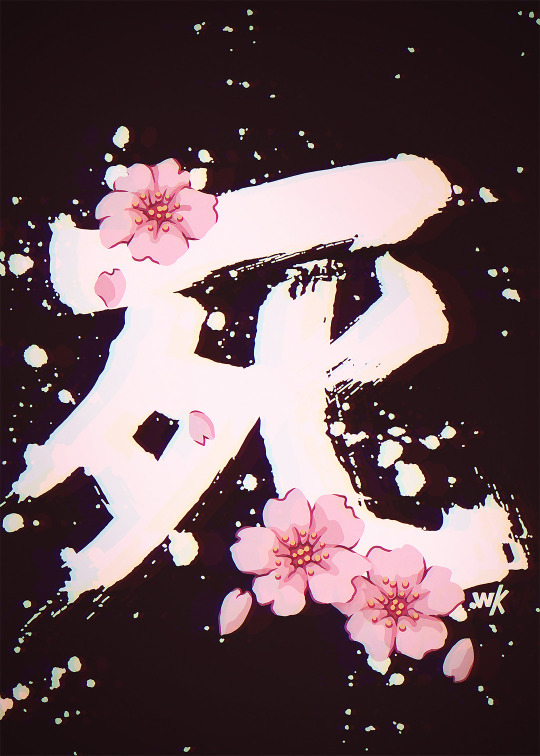
Sakura Death
#sakura#cherry blossom#shodo#japanese calligraphy#calligraphy#japan#inspired#aesthetic#pink flowers#flowers#art#cherry blossoms#pink#japonisme#pastel#black ink#japanese culture#anime aesthetic#artists on tumblr#illustrators on tumblr
440 notes
·
View notes
Text
神無月 (kan-na-zuki) "October" (archaic)

神 = god
無 = not
月 = month
The modern Japanese word for October is 十月 (literally "10th Month), however in the old-fashioned calendar is was known as 神無月, or "the month with no gods".
In October, all the gods in Japan (there are believed to be 8 million of them) go to Izumo Shrine in Shimane Prefecture for a meeting, thus leaving most of Japan with no gods.

The huge shimenawa (sacred rope) at Izumo Shrine.
#Japanese#kanji#Japan#Japanesecalligraphy#書道#October#十月#神無月#japanese language#japanese culture#japanese calligraphy#japanese art#calligraphy#japanese langblr
923 notes
·
View notes
Text

Love this skeletal, wavy handwriting! 月光荘 is read Gekkōsō. Breaking it down:
月光 [げっこう] means moonbeam or moonlight.
月 means month or moon. It’s read つき, ゲツ, or ガツ.
光 means light or ray. It's read ひか.る, ひかり, or コウ.
荘 means villa, inn, cottage, feudal manor, solemn, or dignified. It often shows up as a suffix in hotel or business names, conveying a sense of luxury or dignity. It's also the counter for games of Mahjong, in which case it's read チャン. Otherwise, it's usually read ソウ or ショウ, rarely ほうき or おごそ.か.
95 notes
·
View notes
Text
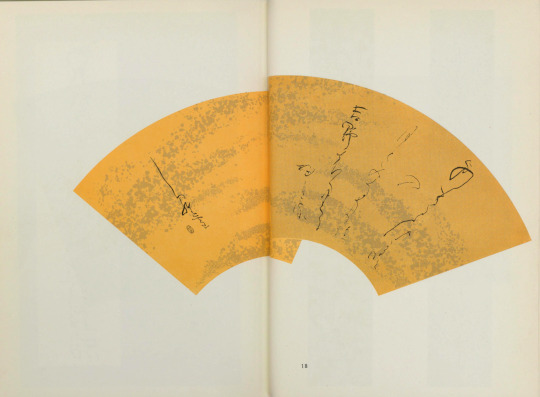

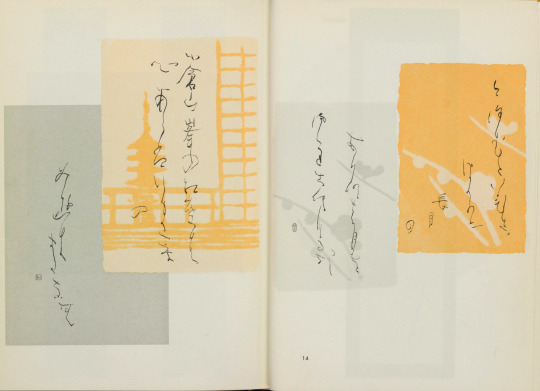
かなの美と構成 萱沼利子 toshiko KAYANUMA
大泉書店刊 1967
#japan #iroha #kana #font #萱沼利子 #toshiko KAYANUMA #japanese Calligraphy #カリグラフィ #typography #Calligraphy
49 notes
·
View notes
Photo

Seigan Soi, Hell
Hanging scroll. Edo Period, Ink on paper 1615-1898
342 notes
·
View notes
Text


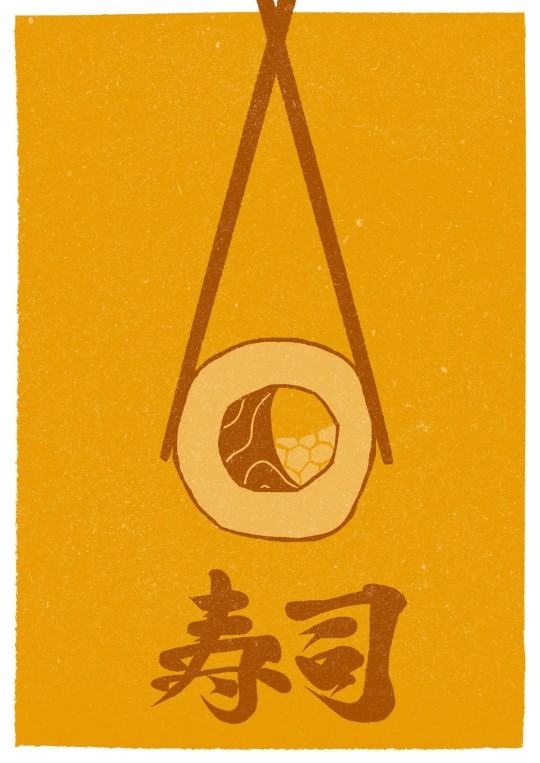
Wanted to order some food art prints for my hallway but didn't really like the vibe of what was available so I just made my own!
This is up on my Etsy store if you like them!
https://hayleyquinn.etsy.com
#ramen#gyoza#sushi#japanese food#japanese#japan#noodles#dumplings#rice#food art#retro art#retro poster#japanese calligraphy#japanese text#digital art#art#poster#minimalistic#minimalism#minimalistic art#food#food artwork#illustration#food illustration#retro ads#monocolour#block colour#procreate#etsy#for sale
16 notes
·
View notes
Text

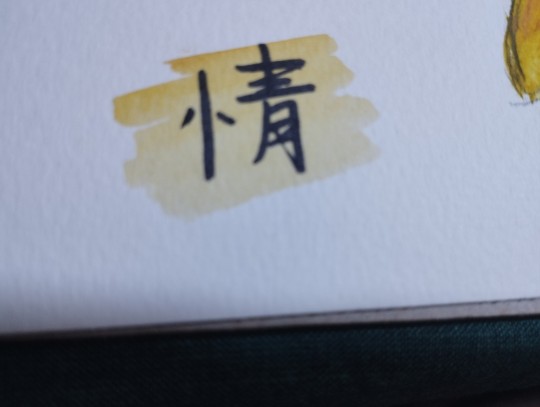


just having fun with paints + calligraphy
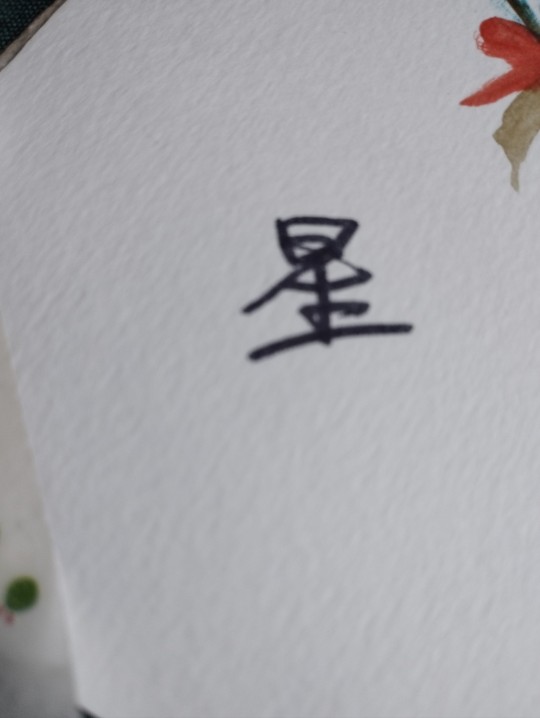
#calligraphy#paint#calligraphy practice#chinese language#japanese language#chinese calligraphy#japanese calligraphy#langblr#studyblr
19 notes
·
View notes
Text

So! I wanted to see if i could write in Japanese in a gothic-calligraphy-like hand.
(forgive the orange highlighter, it was the only chisel-tip writing ustensil on the entire floor)
epic reading below:
originally, this seemed like a challenge, for a few reasons:
English is very simple, so you are able to embellish a lot. Japanese is not, so you can't really embellish/if you do, they could be confused for other strokes and therefore other kanji.
Japanese has plenty of diagonal strokes, while English does not. And with the technique used in this sort of calligraphy, you can't really make them look very interesting.
And above all, In the english logo of Attack on Titan, they use a really cool gothic-like font, so i was interested to see how they did the Japanese logo, but it wasnt similar at all (not very interesting in its own sense either). Which made it seem like it's just not possible. Which made it more of a challenge. (also note that i have never watched or read aot):


Now, Japanese and English are two entirely different languages. Even just written in the blandest, most boring font with a ballpoint pen, they give off completely different vibes, aesthetically.
Typical/Traditional calligraphy for each also give off different vibes, though there are similarities:


However, some fonts/lettering/calligraphy can look pretty similar when effort is put in:


So, i decided to finally try it out for real today and totally not avoid my English assignment rather than simply attempting to doodle a word here or there half-heartedly.
also, i did do some embellishments, which may make it hard to read if you actually know Japanese, but it does that in English too so lol. I did refrain from doing too many, though.
So, to compare the Japanese to the English in the gothic font side by side, it'd look like this:


(i edited the colouring bc orange highlighter is just way to hard to read). Now, the Japanese is pretty unreadable compared to the English, but I figured that was in-part due to the English having space and lower+upper case, so i did another English version where everything is capitalized:

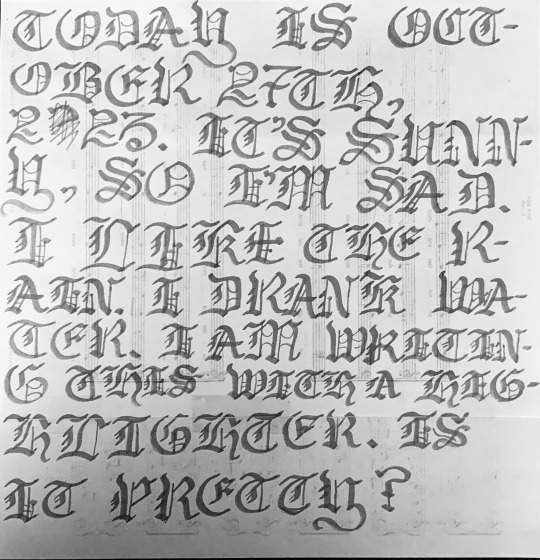
(i ran out of room and had to tape a second paper to it haha). But as you can see, pretty hard to read to (and it would be even harder without the spaces).
So Anyways, do you think the gothic Japanese gives off similar vibes to the English gothic?? how'd i do?
#long post#calligraphy#gothic calligraphy#japanese calligraphy#chinese calligraphy#font#fonts#handwriting#unityrain.txt#unityrain.art
28 notes
·
View notes
Text
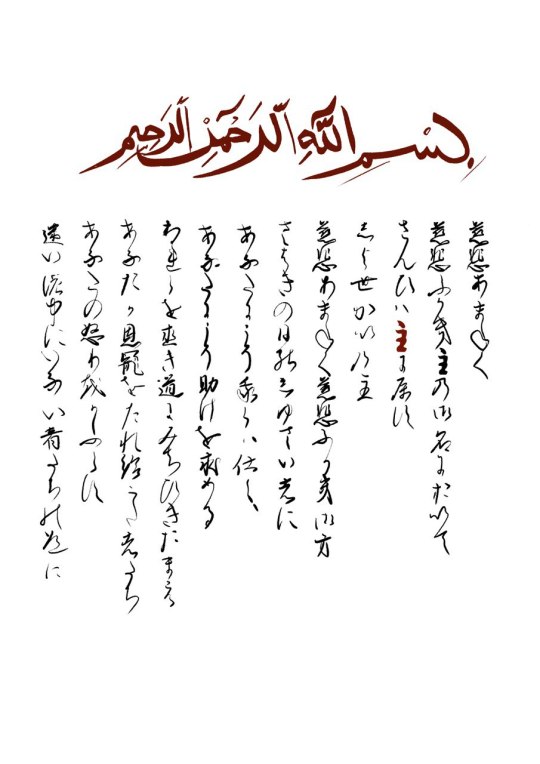
"al-Fatiha"
Sura al-Fatiha written with traditional Japanese calligraphy.
Designed by Naoki Yamamoto
18 notes
·
View notes
Text
japanese calligraphy that reminds me of this japanese restaurant me and my mom would frequent when i was little

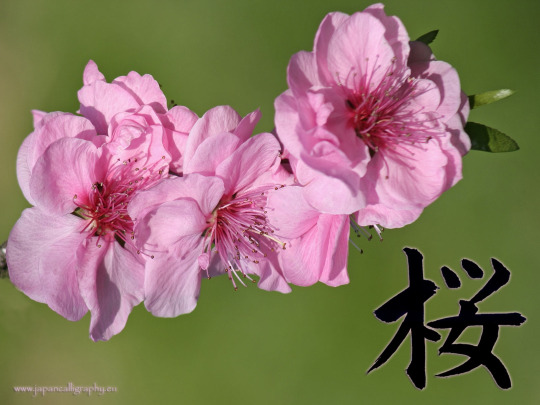




18 notes
·
View notes
Text
Sumi ink, a prized ingredient in traditional Japanese calligraphy, can take years to produce and costs over $1,000 per stick. Why is it so expensive and does it really make a difference?
#Japan#Calligraphy#Sumi ink#Japanese art#Japanese Calligraphy#Japanese Traditions#calligraphy ink#ancient#history#ancient origins
26 notes
·
View notes
Text

Sakura Death
#sakura#cherry blossom#shodo#japanese calligraphy#calligraphy#japan#inspired#aesthetic#pink flowers#flowers#art#cherry blossoms#pink#japonisme#pastel#black ink#japanese culture#anime aesthetic#artists on tumblr#illustrators on tumblr
556 notes
·
View notes
Text
桜梅桃李 (o-bai-to-ri) “never compare yourself to others”

This yo-ji-juku-go (Japanese 4-character idiom) is comprised of 4 beloved Japanese trees. They are:
桜 = cherry (sakura)
梅 = apricot (ume)
桃 = peach (momo)
李 = plum (sumomo)
Each of these iconic trees blossoms in its own time and in its own unique way.
桜 (sakura) are of course the cherry blossom trees famous for blooming spectacularly and incredibly briefly once a year, usually in April. Sakura trees in full bloom is an annual event, and people go to their local park to see them, take photos, and have picnics underneath them. It's such a big deal that it's reported on the weather forecast, with reporters commenting on how quickly the "sakura front" is moving northwards across the country.
梅 (ume) is the "ume" in umeshu! This is a sweet liqueur which is made from soaking ume in sake. It tastes amazing, and is one of the things I miss most about Japan. Japanese learners will no doubt recognise "ume" as usually being translated as "plum", however it is technically closer to the Western apricot.
桃 (momo) is one of the best-loved fruits in Japan. There is even a fairy story called "Momo-taro" about a little boy who comes from inside a peach. He grows up to be a great hero, of course, and saves everyone from a demon. "Momo" is also a fairly common girls' name.
李 (sumomo) are known as "Japanese plums" or "Asian plums". The trees are famous for their delicate white flowers. They usually bloom just before the sakura. Whilst not as famous or as showy as sakura, they are well-loved for their elegance, and for being a sign of spring.
This one-off calligraphy artwork is available on my Etsy shop here:
#japan#japanese#japanese langugage#japanese langblr#japanese learning#kanji#japanese flower#sakura#umeshu#japanese idioms#japanese art#japanese quotes#asian art#japanese calligraphy#asian calligraphy#inspiring quotes#inspriation#motivation#書道#spring#flowers
93 notes
·
View notes
Text

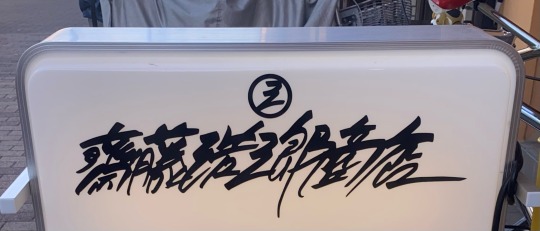
Anyone up for a challenge today??? I got the first 2 and last 3 pretty readily, but the middle took me a LONG time (and some googling!).
Here are some small hints!
This name is 7 characters long. (I kept seeing 6!)
The first 5 characters are a man's name.
The surname is 2 characters, and it's a very common name that we've covered!
The given name is 3 characters, one of which is a number.
The last 2 characters indicate that it's a business.
Gosh, this takes me back to making logic puzzles for my students, about two lifetimes ago! Anyway. Click through for the answer!
The shop is called 齋藤浩三郎商店 or Saitō Kōzaburō Shōten. (Their Insta spells it Kozabro, which I LOVE.) 齋藤浩三郎 is the name, and 商店 [しょうてん] means shop, store, or business.
斎藤 Saitō is the 19th most common Japanese surname.
浩三郎 Kōzaburō follows a very common structure for male first names: (optional lead-in kanji +) [number] + 郎 or 朗. The number denotes birth order: Ichirō for first child/son,* Jirō for second,** Saburō for third, and so on.***
The lead-in kanji (again, optional) is usually a desirable character trait, as in 純一郎 Junichirō: genuine/purity + first + son. Here, it's 浩, which I see quite often in male names. It means vigorousness, abundance, or wide expanse. It's read おおき.い, ひろ.い, or コウ.
郎 means son. It comes from an official title in ancient China. It's almost always read ロウ but can also be おとこ or リョウ.
朗 means melodious, clear, bright, serene, or cheerful. It's read ほが.らか, あき.らか, or ロウ.
*First sons can also be 太朗 Tarō. The name is also kind of a stand-in for "boy"—the equivalent of John Smith is 田中太郎 Tanaka Tarō or 山田太郎 Yamada Tarō. (For Jane Smith, you change 太郎 Tarō to 花子 Hanako.)
*Second sons can also be 次郎 (next son).
***I say "and so on," but 四郎 Shirō is less popular than other numeral names, for obvious reasons, and also, the average number of children born per woman here in 2021 was 1.3(!), so, you know. The higher you go, number boys are rarer than they used to be.
#learning japanese#kanji#japanese langblr#japanese calligraphy#yeah i think this merits the calligraphy tag!!!!!#齋#藤#浩#三#郎#商#店
82 notes
·
View notes
Text


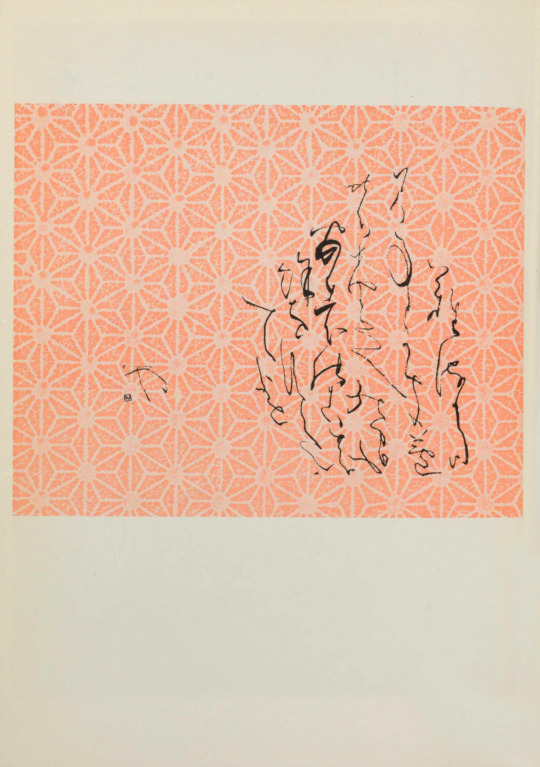
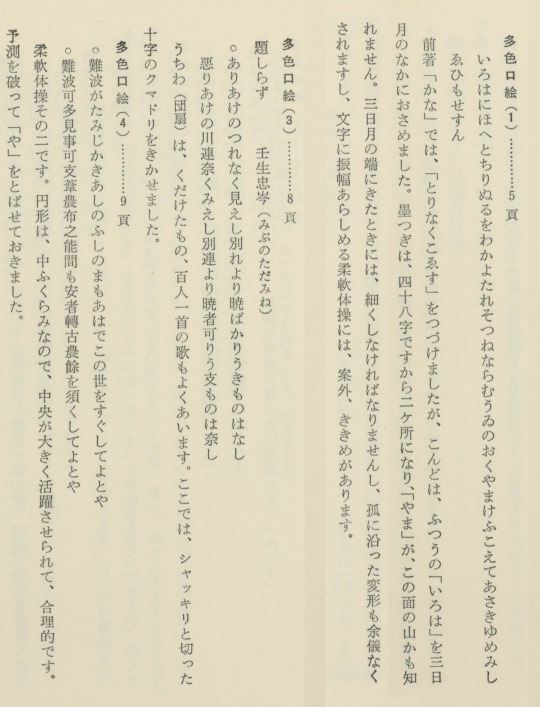

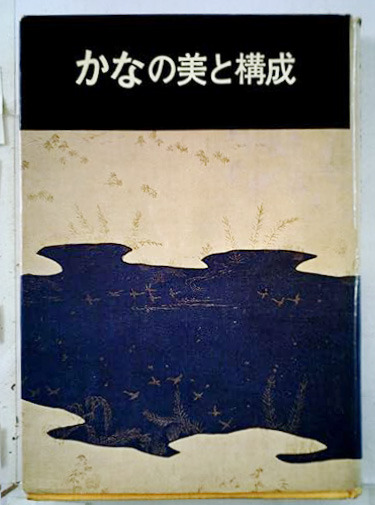
かなの美と構成 萱沼利子 toshiko KAYANUMA
大泉書店刊 1967
#japan #iroha #kana #font #萱沼利子 #toshiko KAYANUMA
#japanese Calligraphy #カリグラフィ #typography #Calligraphy
26 notes
·
View notes
Photo

Daigu Ryokan, Detail Poem about a Crazy Monk, around 1800
194 notes
·
View notes